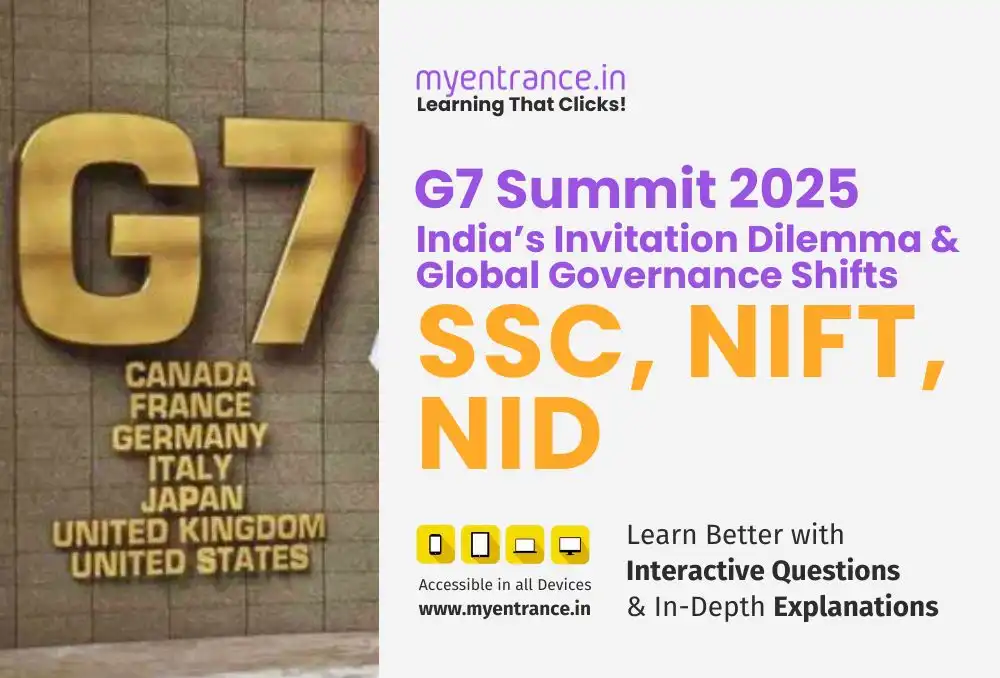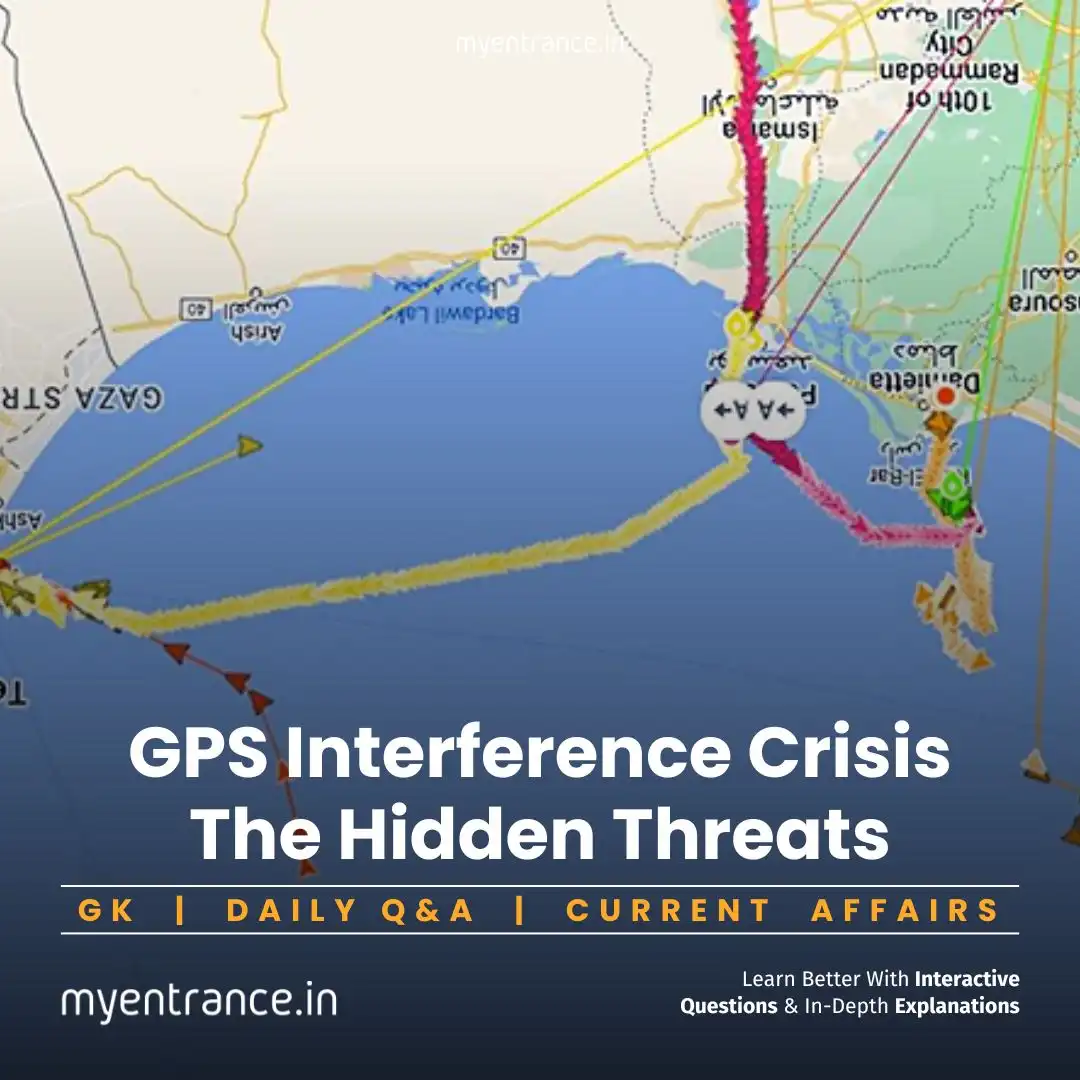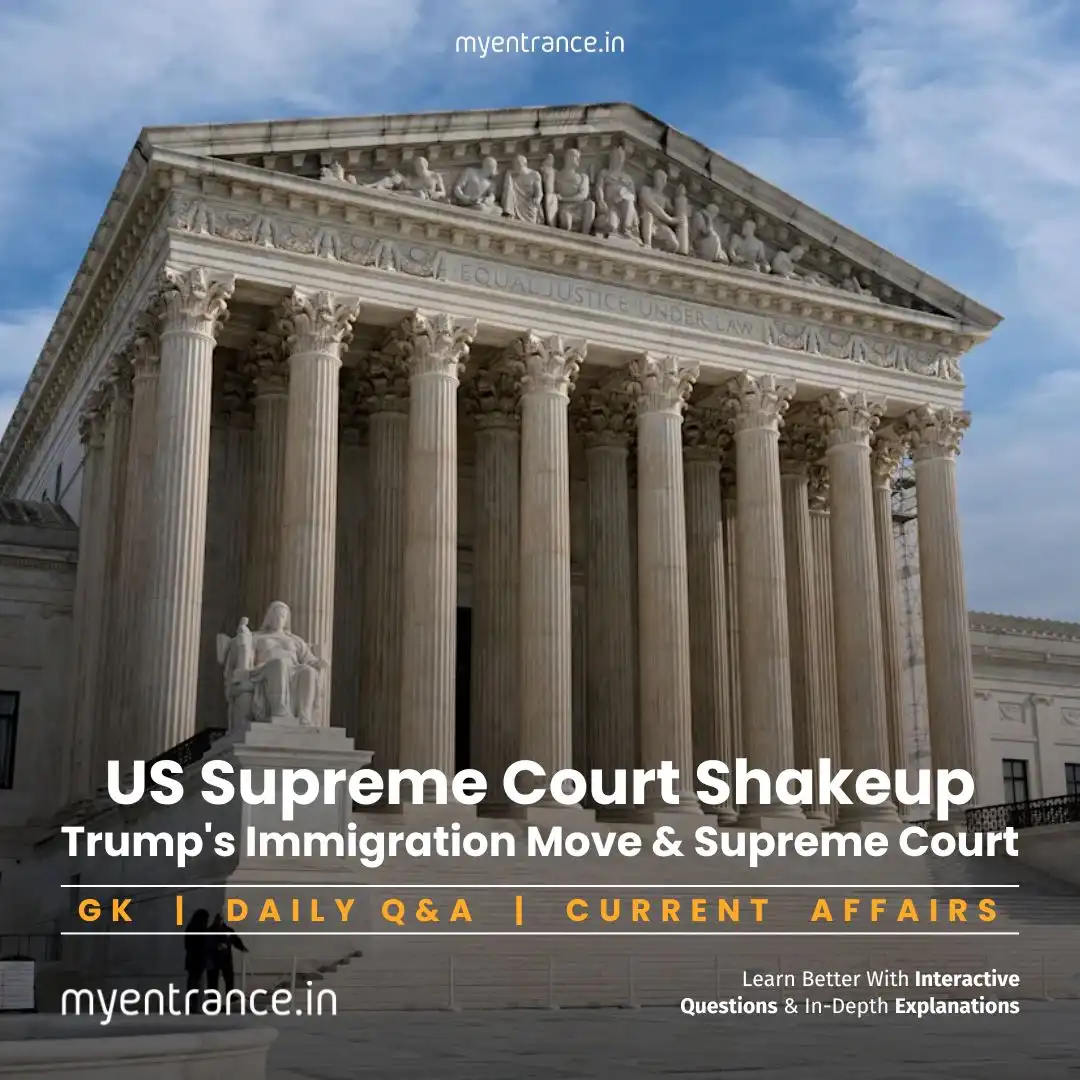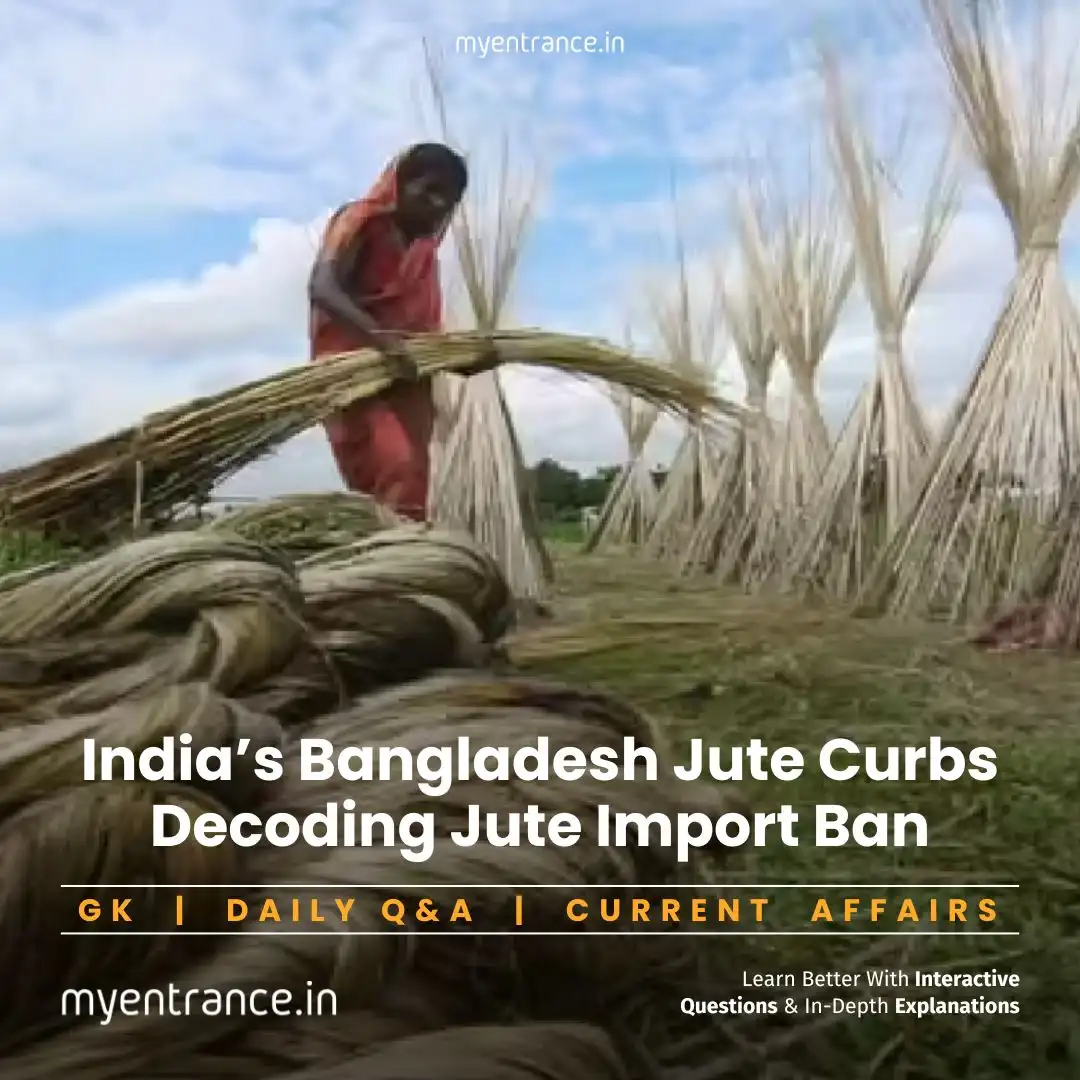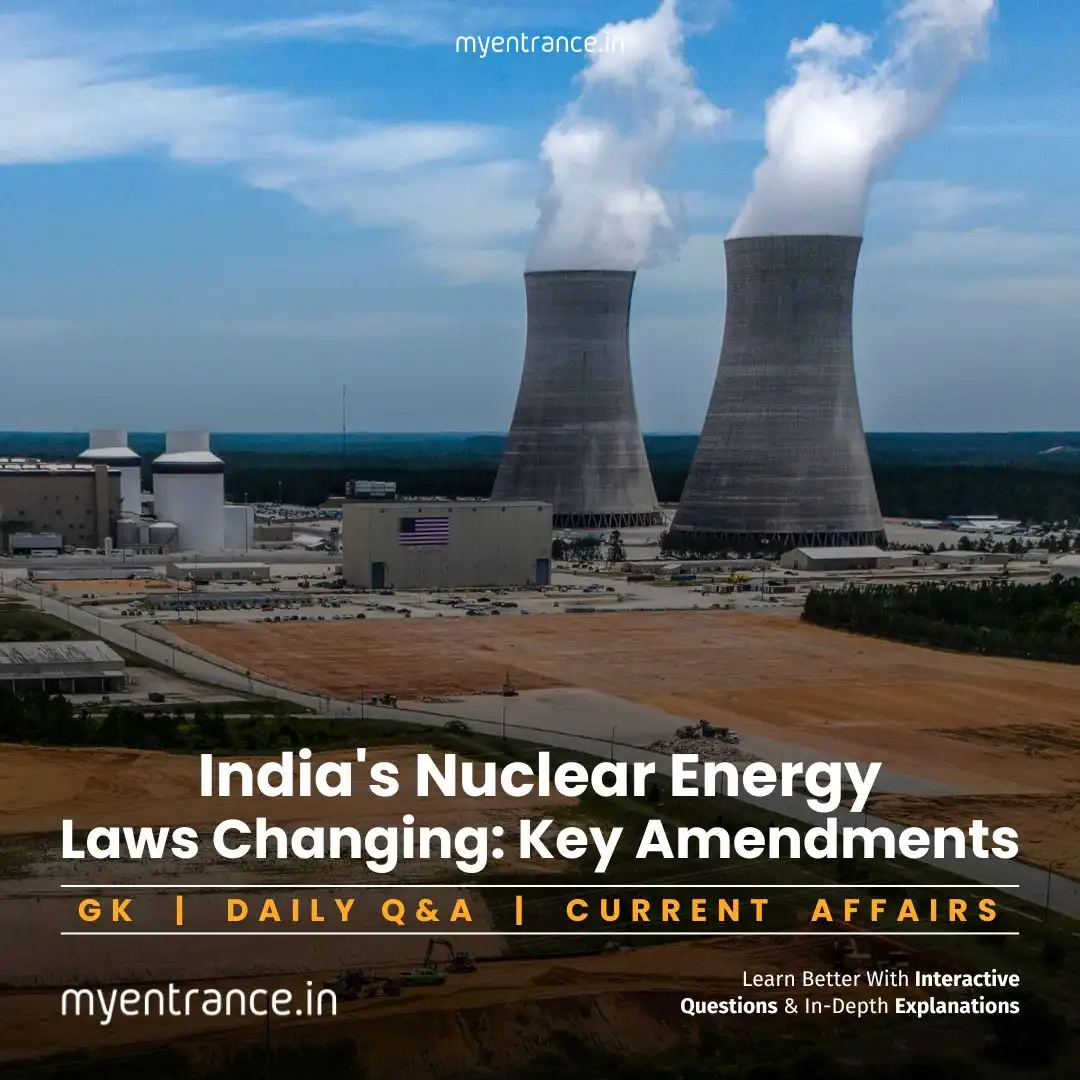Select Language
G7 Summit 2025: India’s Invitation Dilemma & Global Governance Shifts
As the G7 marks its 50th anniversary, India awaits an invitation to Canada’s 2025 summit – a potential break in PM Modi’s attendance streak since 2019. This development spotlights global power dynamics and India’s strategic positioning among international groupings.
G7: Evolution & Key Facts
Origin: Born from 1973 oil crisis; first summit in 1975 (France)
Members: US, UK, Canada, France, Germany, Italy, Japan + EU
Global Share: 40% world GDP, 10% population
Russia’s Exit: Expelled in 2014 after Crimea annexation (G8 → G7)
Nature: Informal forum → No binding decisions, permanent secretariat, or legal status.
2025 Summit: High-Stakes Context
Host: Canada (6th time); venue: Kananaskis, Alberta
Guest Uncertainty: Only Ukraine/Australia confirmed; India uninvited so far
Strategic Gap: First potential absence since 2019 (barring 2020 COVID cancellation)
Why India’s Invitation Matters
Symbolic Weight: Attendance since 2019 affirmed India’s “swing state” status
Balancing Act: Tests India’s ability to navigate West-Russia tensions
G20 Leadership Contrast: Highlights exclusivity vs. G20’s inclusivity (AU/African Union included)
UPSC Key: Comparing International Groupings
G7 (Group of Seven)
Members: 7 industrialized democracies + European Union
Key Focus: Geopolitics, global security, and trade policies
India’s Role: Regular guest participant since 2019
G20 (Group of Twenty)
Members: 19 major economies + European Union + African Union
Key Focus: Global economic cooperation and policy coordination
India’s Role: Held the G20 Presidency in 2023
BRICS (Brazil, Russia, India, China, South Africa + new members like Egypt, Iran, UAE, etc.)
Members: 10 nations (including recent additions)
Key Focus: Promoting a multipolar world and reducing dependence on the US dollar (de-dollarization)
India’s Role: Founding member
G24 (Group of 24)
Members: Like-minded developing countries
Key Focus: Advocating for reforms in the International Monetary Fund (IMF) and World Bank
India’s Role: Core member, alongside China
5 Sample Q&A for UPSC
Q1: Why was Russia expelled from G8?
A1: Annexation of Crimea in 2014 violated international law, triggering suspension from the then-G8.
Q2: Contrast G7 and G20’s representational legitimacy.
A2: G7 represents 10% global population; G20 covers 85% GDP and 2/3 population including Global South.
Q3: What is the G24’s primary objective?
A3: Coordinating developing nations’ positions on IMF/World Bank policies and debt architecture reform.
Q4: Explain the significance of BRICS’ 2024 expansion.
A4: Added Egypt, Ethiopia, Iran, UAE – now representing 45% global population and 25% GDP, accelerating de-dollarization.
Q5: Why might Canada delay India’s G7 invite?
A5: Diplomatic tensions over Khalistani activism in Canada and India’s Russia oil imports could be factors.
Most Predicted Questions
Comprehensive study materials, Expert-guided tips & tricks, Mock tests and instant results.
Start your SSC/ PSC/ NIFT/ NID journey today with MyEntrance, your ultimate online coaching platform.
